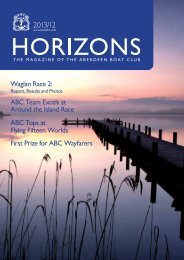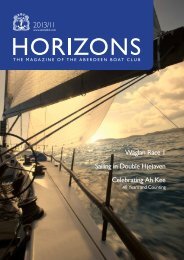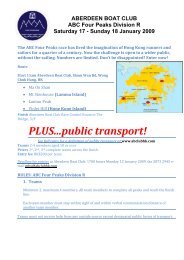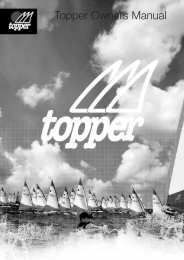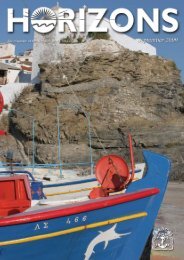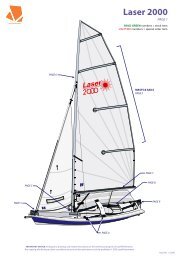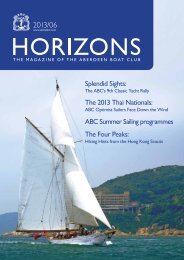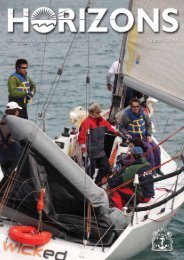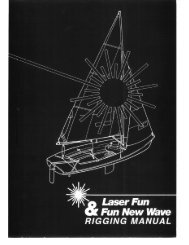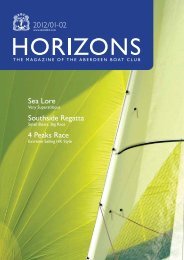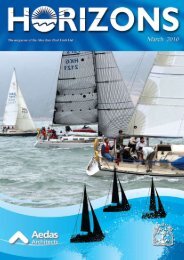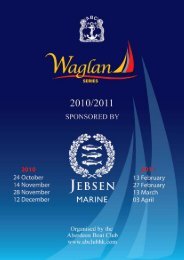Create successful ePaper yourself
Turn your PDF publications into a flip-book with our unique Google optimized e-Paper software.
learned as a child, often in <strong>the</strong> form ofchanted songs – a common, age-oldfeature of vernacular navigation. Thereare indications of route songs in classicalGreek epics (think of The Odyssey),in Viking sagas, in 15 th -century Arabnavigational sources and in <strong>the</strong> world ofPolynesian navigators. But, given <strong>the</strong> lowstatus of China’s mariners, few if any of<strong>the</strong>se route songs appear to have beenrecorded, and <strong>the</strong> last junkmasters whoknew <strong>the</strong>m are today long gone.How were <strong>the</strong> routes <strong>the</strong> hè zhǎngsailed and recorded, when <strong>the</strong>y were?We do not know for sure. China’smaritime world was always somethingof a Cinderella despite its amazing reachthroughout Asian waters. That meant thatits massive practical database did notleave behind it <strong>the</strong> huge printed recordthat we see beginning to accumulate in<strong>the</strong> western world in <strong>the</strong> 15th century,first growing slowly and <strong>the</strong>n, in <strong>the</strong> 18thcentury, beginning its mad acceleration to<strong>the</strong> millionsof written and printed records extant by<strong>the</strong> end of <strong>the</strong> 19th century.We know that junkmasters keptpersonal rutters that recorded <strong>the</strong>irknowledge and experience in <strong>the</strong> set ofzhēnlù that represented <strong>the</strong> network of<strong>the</strong>ir home port’s traditional trade. Almostnone have survived.We have examples in <strong>the</strong> beautifulYale maps in <strong>the</strong> Sterling MemorialLibrary of Yale University, and inwonderful compendia like <strong>the</strong> MáoYuányí’s ( 茅 元 儀 , [1594–1640?]) MaoKun Map (more properly <strong>the</strong> 鄭 和 航 海圖 [Zhèng Hé hánghăi tú], Zhenghenavigation map) and in Xiè Zhāng’s ( 張燮 ), Dōngxī Yáng Kǎo (An investigation of<strong>the</strong> East and West Oceans). And in <strong>the</strong>newly restored Selden Map ( 東 西 洋 航 海 圖 ,Dōngxī Yang Hánghǎi Tú), contemporarywith Xiè Zhāng’s work. Taken altoge<strong>the</strong>r,<strong>the</strong> many individual or home port routepatterns coalesced into <strong>the</strong> core routenetwork that centuries of coastal andoverseas trading had created,including <strong>the</strong> Eastern Passage ourGuangdong junks sailed.Today even yottigation, <strong>the</strong> lastlink to a traditional world of sailingand navigating, is going. A worldthis author grew up in – one notso far-removed from <strong>the</strong> last ofTongjiang map, courtesy of <strong>the</strong> Sterling MemorialLibrary, Yale University<strong>the</strong> junk sailors – is fast dying. No neednow for long-honed seamanship skillsand a good visuo-spatial memory storingmental route maps of headlands andchannels, islands and hazards, roadsteadsand havens. We have our iPads andiPhones with built-in GPS systems andapps with all <strong>the</strong> charts to take us fromhere to Australia. And with <strong>the</strong> app to <strong>the</strong>Hong Kong Observatory, Predict Windor Windguru, <strong>the</strong> tides and <strong>the</strong> wea<strong>the</strong>rliterally are at our fingertips.Do we have <strong>the</strong> same experienceas <strong>the</strong> old hè zhǎng as his junk dipped,curtsied and creaked its way through<strong>the</strong> D’Aguilar Channel and out into <strong>the</strong>Eastern Approaches? Maybe not.Stephen Davies with Graham Aldrich at <strong>the</strong> ABC book launchJunks in Central HarbourP.32



